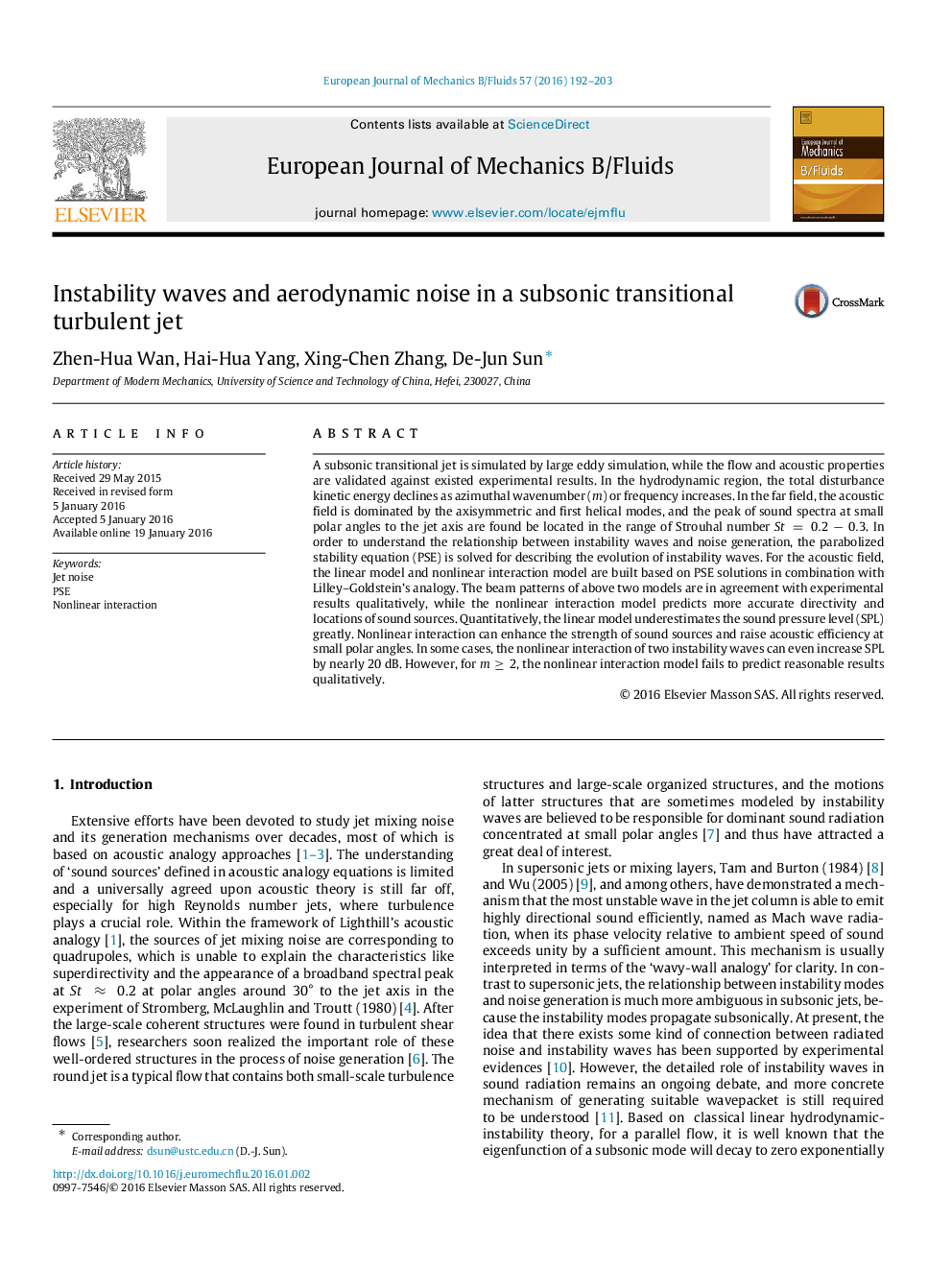| Article ID | Journal | Published Year | Pages | File Type |
|---|---|---|---|---|
| 650238 | European Journal of Mechanics - B/Fluids | 2016 | 12 Pages |
A subsonic transitional jet is simulated by large eddy simulation, while the flow and acoustic properties are validated against existed experimental results. In the hydrodynamic region, the total disturbance kinetic energy declines as azimuthal wavenumber (mm) or frequency increases. In the far field, the acoustic field is dominated by the axisymmetric and first helical modes, and the peak of sound spectra at small polar angles to the jet axis are found be located in the range of Strouhal number St=0.2−0.3St=0.2−0.3. In order to understand the relationship between instability waves and noise generation, the parabolized stability equation (PSE) is solved for describing the evolution of instability waves. For the acoustic field, the linear model and nonlinear interaction model are built based on PSE solutions in combination with Lilley–Goldstein’s analogy. The beam patterns of above two models are in agreement with experimental results qualitatively, while the nonlinear interaction model predicts more accurate directivity and locations of sound sources. Quantitatively, the linear model underestimates the sound pressure level (SPL) greatly. Nonlinear interaction can enhance the strength of sound sources and raise acoustic efficiency at small polar angles. In some cases, the nonlinear interaction of two instability waves can even increase SPL by nearly 20 dB. However, for m≥2m≥2, the nonlinear interaction model fails to predict reasonable results qualitatively.
